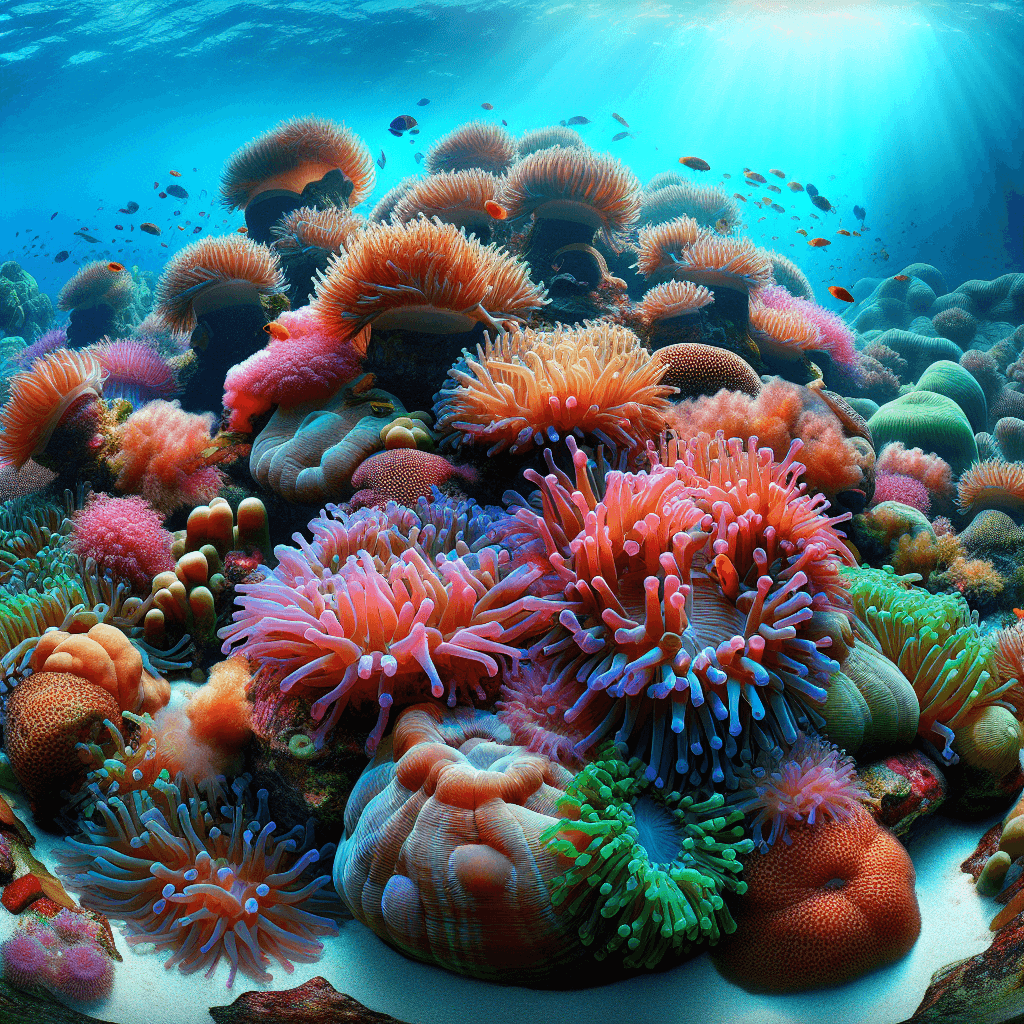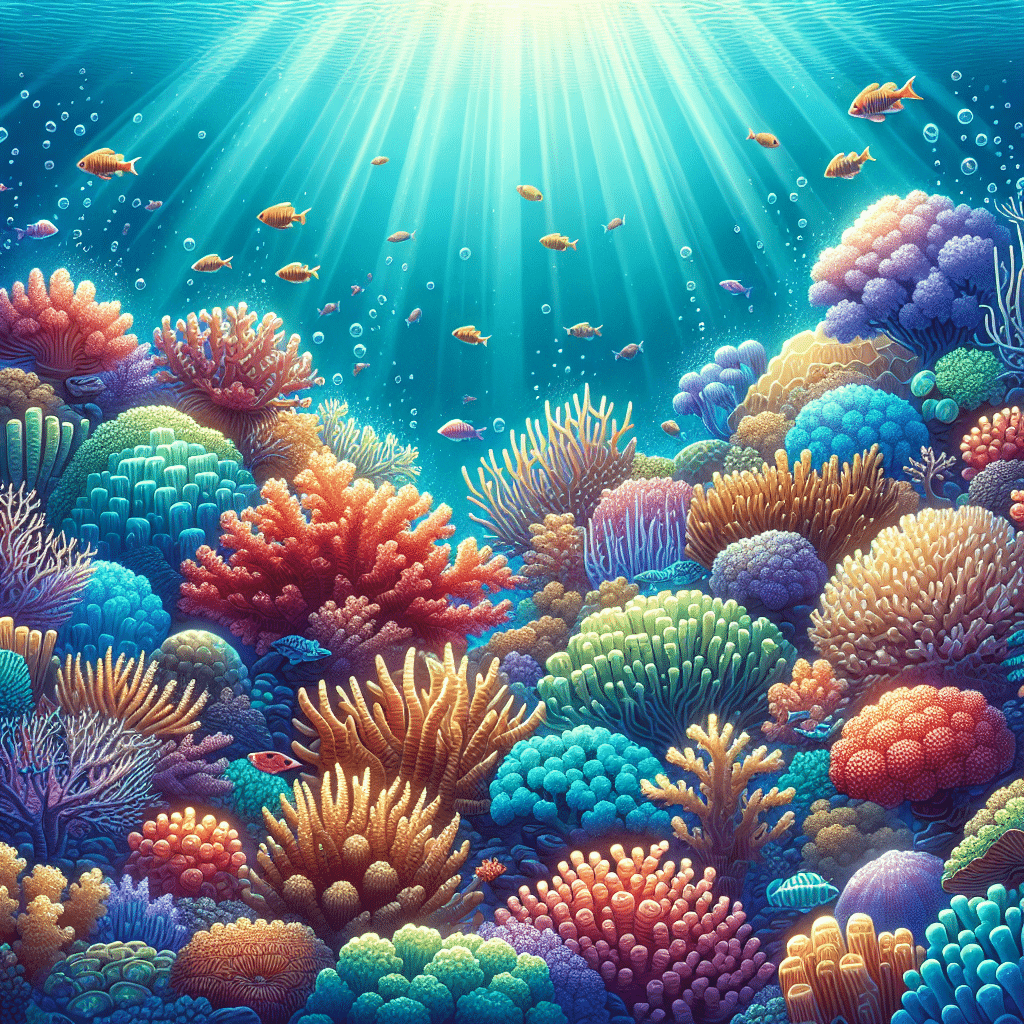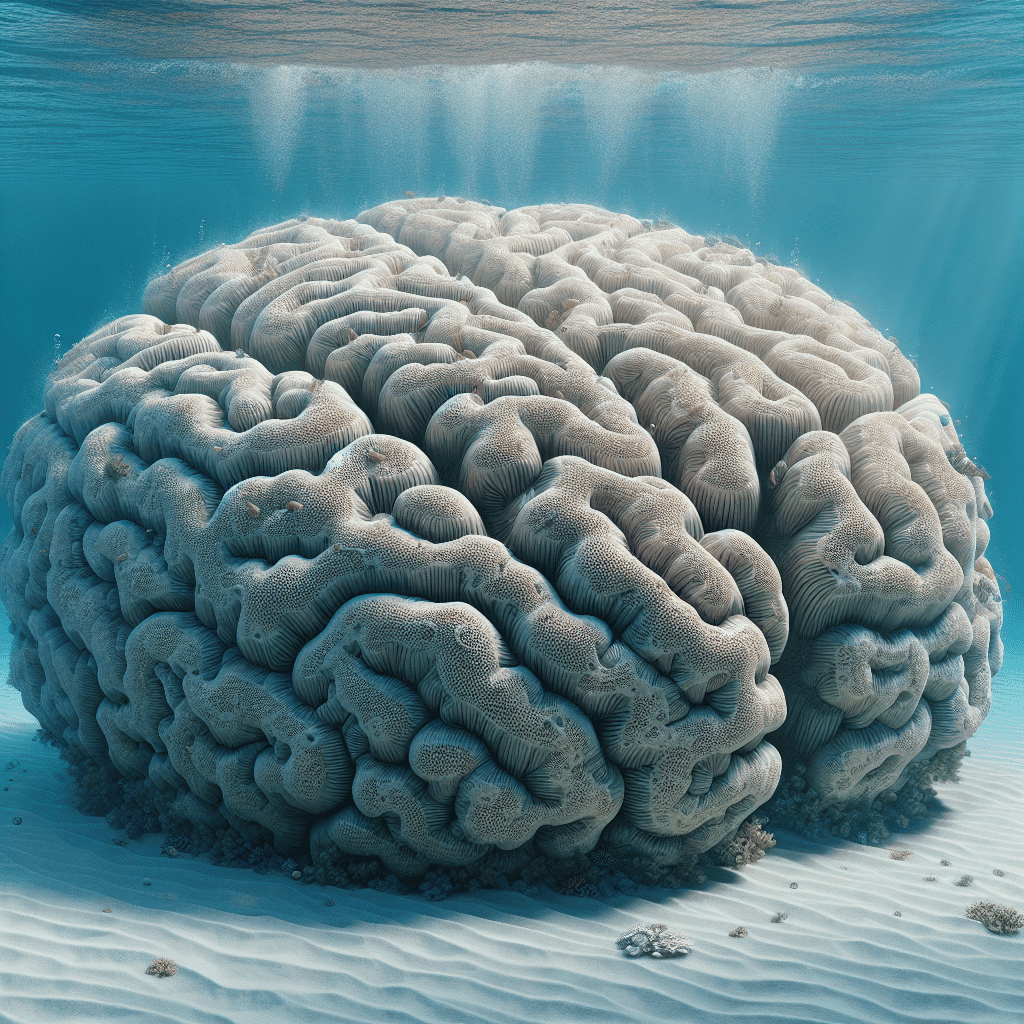Understanding Anemone Corals
Anemones and Symbiotic Relationships
Anemone corals, often simply referred to as anemones, are fascinating creatures that play a pivotal role in marine ecosystems. They belong to the same family as jellies and corals, and they fixate themselves to hard surfaces, staying in one place throughout their lives. Anemones use their colorful, stinging tentacles to stun and capture prey that swims too close. What I find particularly interesting is their symbiotic relationships with various marine animals, particularly clownfish and certain types of crabs.
In these relationships, known as mutualism, both parties benefit. The anemones provide shelter and protection for the clownfish, while the clownfish offer food and help keep the anemones clean by removing parasites. This partnership is crucial for the health of coral reef ecosystems, as it helps maintain biodiversity and supports overall reef health. For more about these connections, check out this resource on coral reef biodiversity.
Anemone Coral Species
There are various species of anemone corals that can thrive in a reef tank setting. Below is a brief overview of some of the popular species that I find interesting:
| Species Name | Common Name | Notable Features |
|---|---|---|
| Heteractis magnifica | Magnificent Sea Anemone | Large size, vibrant colors, often hosts clownfish |
| Entacmaea quadricolor | Bubble Tip Anemone | Distinctive bubble-tipped tentacles, easy to care for |
| Stichodactyla gigantea | Giant Carpet Anemone | Thick, carpet-like appearance, provides great shelter |
| Macrodactyla doreensis | Long Tentacle Anemone | Long, flowing tentacles, prefers lower light levels |
Understanding these species is essential for anyone considering adding anemone corals to their reef tank. Each species has unique care requirements, including feeding, lighting, and water quality. For more information on different types of corals, feel free to explore my articles on brain coral, mushroom coral, and acropora.
The Role of Anemones in Coral Reefs
Anemone Habitat on Coral Reefs
Anemones play a vital role in the intricate ecosystem of coral reefs. They thrive in these vibrant underwater environments, often found nestled among the branches of corals and other marine structures. Anemones need a stable surface to anchor themselves, and the hard surfaces provided by coral reefs make them an ideal habitat. Plus, their presence helps create a complex habitat that supports a variety of marine life.
These fascinating creatures offer shelter for various fish and invertebrates. The nooks and crannies of coral reefs not only provide hiding spots but also serve as nursery grounds for numerous reef fish species. Young fish find refuge from predators among the anemones, which helps them grow strong in a safe environment. The relationship between anemones and their surrounding coral habitat is essential for the overall health of the reef ecosystem.
Anemones and Coral Reef Ecosystems
Anemones contribute significantly to the biodiversity of coral reef ecosystems. They form symbiotic relationships with various marine species, including fish and crabs. For instance, the clownfish anemone is famous for its partnership with clownfish, where both parties benefit from the relationship. The anemones provide shelter and protection, while the clownfish help keep the anemones free from parasites and debris (Coral.org).
Moreover, coral reefs are often referred to as the “rainforests of the sea” due to their rich biodiversity. Anemones, along with corals and other invertebrates, play a crucial role in maintaining the balance of these ecosystems. They help filter water, provide habitat, and contribute to the overall health of reef systems. With their ability to adapt to shallow, low-nutrient waters, anemones and corals have specific adaptations necessary for survival in this challenging environment (NAMEPA).
In summary, anemones are not just beautiful additions to reef tanks; they are essential players in the coral reef ecosystem, providing shelter, promoting biodiversity, and contributing to the health and stability of these underwater worlds. If you’re looking to learn more about maintaining a healthy reef tank, be sure to check out related topics such as corals and hammer coral.
Anemones and Clownfish Partnership
Clownfish and Anemone Interaction
The relationship between clownfish and anemones is one of the most fascinating examples of mutualism in marine ecosystems. Clownfish thrive in the protective embrace of anemones, like the clownfish anemone, which offer shelter from predators. In return, clownfish provide several benefits to their anemone hosts. They help remove harmful parasites and debris, ensuring the anemone stays healthy. Additionally, clownfish are known to chase away potential threats, like fish that might eat the anemone (Marine Sanctuary Foundation).
Anemones, in turn, provide a safe haven for clownfish to lay their eggs. The relationship is so strong that clownfish have developed a unique mucus coating that allows them to interact with anemones without being stung. This fascinating adaptation is crucial for both species’ survival (Connecting the Dots Journal).
Mutualistic Benefits
The partnership brings multiple mutualistic benefits that are vital for both clownfish and anemones. Here’s a quick breakdown of the advantages:
| Benefit | For Clownfish | For Anemones |
|---|---|---|
| Protection | Safe shelter from predators | Protection from fish that feed on anemones |
| Nutrient Supply | Clownfish waste, rich in ammonia, fertilizes the anemone, aiding in breathing, growth, and reproduction (Marine Sanctuary Foundation) | Anemones passively receive nutrients from clownfish waste |
| Cleaning | Clownfish help remove parasites and dead tentacles | Healthier anemones with fewer parasites |
This symbiotic relationship is crucial for the health of coral reef ecosystems. As a hobbyist, understanding this partnership helps in creating an environment that supports both species. Maintaining water quality and ensuring minimal pollution can contribute to their survival (Connecting the Dots Journal). If you’re interested in learning more about coral varieties, check out our articles on corals like brain coral and torch coral.
Care and Maintenance of Anemone Corals
Taking care of anemone corals can be a rewarding experience for any reef tank enthusiast. To ensure your anemones thrive, it’s essential to focus on their feeding and placement in the tank.
Feeding Anemone Corals
Anemone corals are fascinating creatures that benefit from a specific feeding regimen. They are passive feeders, which means they rely on their surroundings for nutrients. In my experience, providing a varied diet helps maintain their health and vibrant colors. Here are some common food options:
| Food Type | Frequency |
|---|---|
| Meaty foods (e.g., shrimp, fish) | 2-3 times a week |
| Plankton (frozen or live) | 1-2 times a week |
| Special anemone pellets | As needed |
I usually feed them small portions to prevent overfeeding, which can lead to water quality issues. When feeding, I make sure the food is small enough for the anemone to capture easily. Remember to observe your anemones; if they extend their tentacles and seem active, they are likely ready to eat.
Placement and Location Tips
Finding the right spot for your anemones in the tank is crucial for their growth and health. They prefer to be placed in areas with moderate water flow and lighting, which mimic their natural habitat. Here are some placement tips:
Lighting: Anemones thrive under moderate to high lighting. I recommend using LED or T5 lights to provide adequate illumination. They require around 6-8 hours of light daily.
Water Flow: Anemones like a gentle current that allows them to extend their tentacles without being whipped around. Too much flow can cause stress, while too little can lead to stagnation.
Tank Location: I typically place anemones near the bottom of the tank or on stable rock formations. They need a secure anchor as they can move if they feel uncomfortable.
Avoiding Aggressive Corals: It’s best to position anemones away from aggressive corals, as they can sting and harm one another. Keeping them isolated helps maintain a harmonious environment.
By ensuring proper feeding and placement, I can create a thriving habitat for my anemone corals. If you’re curious about more coral types, don’t forget to check out our articles on brain coral and torch coral.
Anemone Health and Diseases
Maintaining the health of my anemone corals is essential for the overall success of my reef tank. Like any living organism, anemones can be susceptible to various diseases. It’s important for me to recognize the common issues they face and take the necessary steps to keep them thriving.
Common Diseases of Anemone Corals
Anemones can face a range of health issues, some of which may be caused by environmental stressors or poor water quality. Here are a few common diseases and conditions to watch for:
| Disease/Condition | Symptoms | Causes |
|---|---|---|
| Brown Jelly Disease | Tissue necrosis, brown mucus | Bacterial infection, poor water quality |
| Anemone Bleaching | Loss of color, transparency | Stress, high temperatures, low light |
| Mouth Rot | Swelling around the mouth, tissue loss | Bacterial infection, poor feeding |
| Disintegration | Tentacle loss, fading color | Poor water conditions, stress |
Keeping an eye on these symptoms can help me intervene early and protect my anemones. Regular water testing and maintaining optimal conditions are crucial.
Maintaining Anemone Health
To ensure my anemones remain healthy, I focus on several key factors in my tank setup. Here’s what I do:
Water Quality: I regularly test for parameters like pH, salinity, and nitrate levels. Anemones thrive in stable conditions, so I make adjustments as needed to maintain optimal water quality.
Feeding: Anemones are passive feeders, so I provide them with high-quality food such as marine pellets, frozen mysis shrimp, or other meaty foods. I also consider the benefits of clownfish waste, which aids in the anemone’s growth and reproduction (Marine Sanctuary Foundation).
Lighting: Proper lighting is essential for the health of my anemones. I use a suitable LED light that mimics natural sunlight, promoting photosynthesis for any symbiotic algae they may host.
Tank Mates: I carefully select compatible tank mates for my anemones. Clownfish, for example, provide mutual benefits and protection (Connecting the Dots Journal).
Placement: I make sure to place my anemones in a suitable location within the tank, avoiding strong currents and ensuring they have enough space to expand.
By focusing on these aspects, I can maintain the health of my anemone corals and enjoy the vibrant beauty they bring to my reef tank. If I’m ever unsure, I can always refer to other coral types, like brain coral or mushroom coral, for additional care ideas.
Anemone Coral Types
When diving into the world of anemone corals, it’s essential to understand the differences between hard and soft corals, as well as the unique characteristics of these fascinating creatures.
Hard Corals vs. Soft Corals
Hard Corals
Also known as scleractinian or stony corals, hard corals produce a rigid skeleton made of calcium carbonate (CaCO3) in crystal form called aragonite. They are the primary reef-building corals. Hard corals can grow at varying rates depending on the species. For instance, some branching species can increase in height or length by as much as 10 cm a year, while dome and plate species may only grow 0.3 to 2 cm per year.
| Coral Type | Skeleton Type | Growth Rate |
|---|---|---|
| Hard Corals | Rigid Calcium Carbonate | 0.3 – 10 cm/year |
| Soft Corals | No rigid skeleton | Varies by species |
Soft Corals
Soft corals, known as Alcyonacea or ahermatypic corals, do not produce a rigid skeleton and do not form reefs. They often resemble trees, bushes, fans, whips, or grasses. These corals are mostly colonial, and while they might not build reefs like hard corals, they play a vital role in marine ecosystems.
Anemone Coral Characteristics
Anemone corals are unique in their structure and habitat. They resemble miniature sea anemones and have polyps that typically range from 1 to 10 millimeters in size, although some species can have larger polyps. Anemone corals share some similarities with both hard and soft corals, as they can be both solitary and colonial.
| Characteristic | Description |
|---|---|
| Polyp Size | 1 – 10 mm (some larger) |
| Skeleton Type | Can be hard or soft, depending on species |
| Growth Form | Solitary or colonial |
| Relationship with Zooxanthellae | May have a symbiotic relationship with algae |
Most reef-building corals, including anemone corals, engage in a mutually beneficial relationship with microscopic unicellular algae called zooxanthellae. These algae live within the coral’s cells and provide organic material through photosynthesis, which is vital for the coral’s survival. For more insights into different coral types, check out articles on brain coral and mushroom coral.
Understanding the types and characteristics of anemone corals is crucial for anyone looking to create a thriving reef tank. By knowing how to care for these unique organisms, I can ensure a vibrant and healthy aquarium environment.
Anemone Coral Reproduction
Understanding how anemone corals reproduce can be fascinating for anyone interested in maintaining a vibrant reef tank. There are two main methods of reproduction: asexual and sexual reproduction. Each has its own characteristics and implications for the health of the coral population.
Asexual and Sexual Reproduction
Anemone corals, like many reef-building corals, can reproduce both asexually and sexually. Asexual reproduction occurs through processes like budding or splitting polyps. This method results in genetically identical polyps within a colony, allowing for rapid expansion and resilience (NOAA).
On the other hand, sexual reproduction involves a more complex process. During this method, anemones release gametes into the water column, which leads to the formation of new colonies. This method is crucial for genetic diversity, helping populations adapt to changing environmental conditions.
| Reproduction Type | Method | Description |
|---|---|---|
| Asexual | Budding/Splitting | Creates genetically identical polyps in a colony. |
| Sexual | Broadcast Spawning | Releases eggs and sperm into the water, leading to new colony formation. |
Coral Spawning Events
One of the most spectacular aspects of coral reproduction is the spawning event. Anemones, along with other corals, often engage in synchronized spawning, which is typically timed to specific lunar cycles. For instance, at the Flower Garden Banks National Marine Sanctuary, coral spawning occurs 7-10 days after the full moon in August each year. This event is notable for the large concentration of mass spawning corals, making it one of the most impressive coral spawning events globally (NOAA).
Corals like the staghorn coral reproduce once a year after the full moon in late summer by broadcasting eggs and sperm into the water. This method enhances the chances of fertilization and the successful establishment of new colonies. Staghorn corals reach reproductive maturity at around 7 inches tall and can grow rapidly, making them an important species for reef ecosystems (NOAA Fisheries).
By understanding these reproductive methods and events, I can better appreciate the life cycle of anemone corals and how it impacts the overall health and diversity of my reef tank. It’s crucial to keep an eye on these processes, especially if I’m looking to foster a thriving coral environment.
Conservation of Anemone Corals
Threats to Anemone Coral Survival
When it comes to the survival of anemone corals, there are significant threats they face. Coral reefs, including those that house anemones, cover less than 0.1 percent of the ocean, yet they support one in every four marine species (Smithsonian’s National Zoo). Unfortunately, in the past few decades, one-tenth of all coral reefs have been destroyed, and one-third of the remaining reefs have been seriously degraded. The greatest threats to these ecosystems include:
| Threat | Description |
|---|---|
| Rising Water Temperatures | Increased temperatures stress coral and lead to bleaching. |
| Ocean Acidification | Higher levels of carbon dioxide lower the pH of ocean waters, which can harm coral growth. |
| Climate Change | Long-term changes to weather patterns affect marine ecosystems. |
| Diseases | Outbreaks of diseases can devastate coral populations. |
| Unsustainable Fishing Practices | Overfishing disrupts the balance of coral reef ecosystems. |
| Land-Based Pollution | Runoff from agriculture and urban areas pollutes waters, harming coral health. |
The ongoing destruction of coral reefs not only threatens the anemones but also the myriad of species that depend on these ecosystems for survival. For example, clownfish, which have a symbiotic relationship with anemones, are also facing threats due to habitat degradation, pollution, and overfishing (Connecting the Dots Journal).
Conservation Efforts and Solutions
To combat these threats, various conservation efforts are underway aimed at both protecting coral reefs and restoring degraded areas. Here are some key initiatives:
| Conservation Effort | Description |
|---|---|
| Marine Protected Areas | Designated zones where fishing and other harmful activities are restricted or prohibited. |
| Sustainable Fishing Practices | Implementing regulations that reduce the impact of fishing on coral ecosystems. |
| Pollution Reduction Initiatives | Efforts to minimize runoff through better land management and regulation of pollutants. |
| Coral Restoration Projects | Programs that involve transplanting healthy corals or breeding coral in nurseries for replanting. |
| Climate Change Mitigation | Global efforts to reduce carbon emissions and combat climate change. |
As a hobbyist, supporting these conservation efforts can make a difference. Avoid purchasing wild-caught clownfish and consider sourcing tank-raised fish to help reduce pressure on natural populations. Staying informed about the health of coral reefs and advocating for sustainable practices can contribute to preserving these vital ecosystems. For more information on other coral types, check out our articles on brain coral, torch coral, and acropora.



